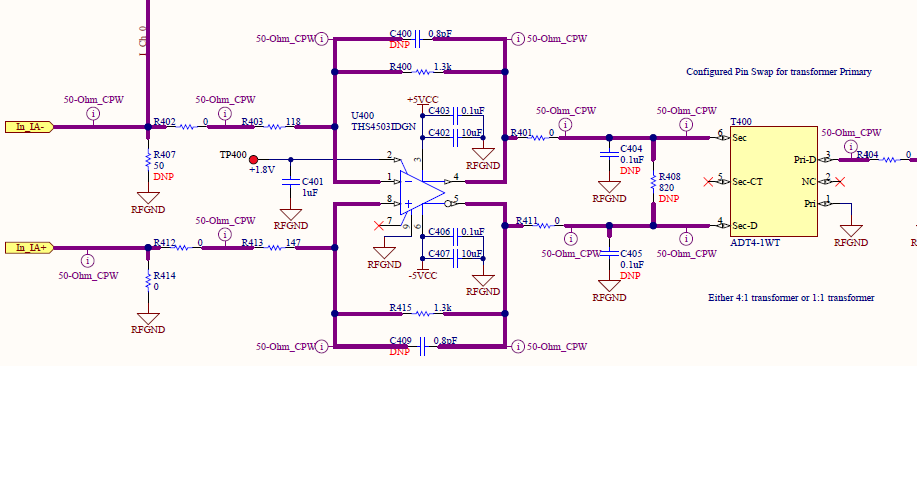Hi,
I used THS4503 in my board to convert a differential signal to a single ended one. I have used the same configuration as used in THS4503EVM, however, when no signal is connected the current consumption of THS4503 is almost 10 times more than what I expect (40 mA for each supply). When I connect the signal to the inputs of THS4503 this DC current decreases? I appreciate if you could help me to find the reason for these observations.
Regards,
Samaneh


